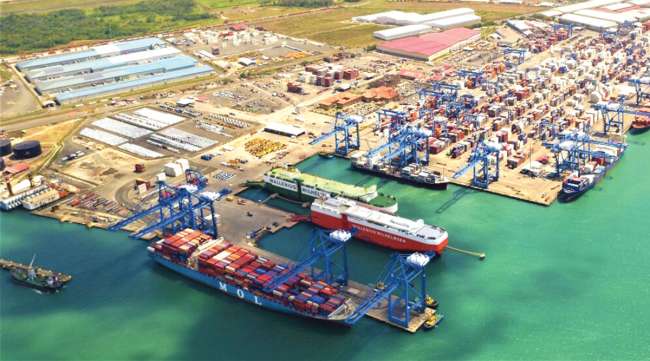Features Coordinator
Air and Ocean Freight Deal With Fluctuating Volumes in 2022

[Stay on top of transportation news: Get TTNews in your inbox.]
Ports
Amid a year of high inflationary pressures, a softening U.S. economy and prolonged labor negotiations for West Coast dockworkers, the growth in ocean freight volumes at North American ports seen two years ago slowed in 2022.
The top three ports on Transport Topics’ Top 25 list of the largest container ports in North America are familiar faces, as the ports of Los Angeles, New York-New Jersey and Long Beach populate the top three for another year. The gap in container traffic that’s existed at the largest terminals on the West Coast and East Coast has shrunk, as the New York-New Jersey complex overtook the Port of Long Beach for the No. 2 spot on the list.
The list ranks container ports on the basis of 2022 cargo throughput as measured in 20-foot-equivalent units, or TEUs. The New York-New Jersey terminal moved a record total of nearly 9.5 million TEUs in 2022, approximately 400,000 TEUs behind the perennial leading port in North America, the Port of Los Angeles, which handled 9.9 million TEUs.
Several ports along the western U.S. coast experienced year-over-year declines in TEU throughput in 2022, due in part to the yearlong labor negotiations between West Coast dockworkers unions and port terminals.
Negotiations between the International Longshore and Warehouse Union and Pacific Maritime Association began in May 2022, and a deal was not reached until June 2023 after port employees spent nearly a year working without a contract. West Coast ports, including the ports of Los Angeles, Long Beach, Oakland and the Northwest Seaport Alliance consisting of the ports of Seattle and Tacoma, Wash., experienced an uptick in labor disruptions as a result of the ongoing negotiations. This prompted retailers and shippers to shift their supply chains east, benefiting ports such as New York-New Jersey, Savannah, Ga., and Houston, which all experienced year-over-year throughput increases of at least 5%.
In total, 12 of the 25 top North American container ports saw jumps in TEU throughput in 2022, with Port Houston experiencing the biggest jump, increasing its container volume by 15.1%.
Airports
While 2021 was a period of much-needed recovery for air cargo volumes at North American airports, 2022 brought decreases in cargo throughput, spurred in part by economic uncertainty and its effect on consumer spending.
Check out Transport Topics' updated Top 50 list of the largest freight transportation companies in the world and explore how these companies are re-evaluating their supply chains. Tune in above or by going to RoadSigns.ttnews.com.
Of the 10 busiest airports on the Transport Topics Top 100 list of the top cargo airports in North America by landed weight, just three experienced increases in cargo volume in 2022: No. 3 Louisville Muhammad Ali International, No. 6 Cincinnati/Northern Kentucky International, and No. 8 Indianapolis International. Just seven of the top 20 North American airports reported increases in landed weight year-over-year.
Sitting atop the list for a second-consecutive year is Ted Stevens Anchorage International in Alaska, despite a year-over-year decrease in landed weight of 954 million pounds. Serving as a major hub for both FedEx Express and UPS Airlines, the Alaskan terminal remains one of the largest gateways for North American cargo transported intercontinentally.

A plane at the new deicing facility at the Memphis International Airport. (Lucy Garrett/Bloomberg News)
Tennessee’s Memphis International placed second on the list yet again, a spot it has held since being overtaken by Ted Stevens Anchorage for the No. 1 ranking last year. Memphis International also experienced a sizable dip in volume in 2022, handling 1.4 billion pounds less cargo than in 2021, a dip of nearly 6%.
According to the International Air Transport Association (IATA), global demand in 2022 took a dip of 8%. This could be seen as a return to form after 2021 brought record-setting jumps in demand globally amid COVID-19 recovery efforts. North American carriers felt this slowing in demand, experiencing a 5.1% decrease on their own.
2023 thus far has brought much of the same for air cargo volumes, as battles against rising inflation globally have continued to negatively affect demand. When compared with pre-pandemic levels, however, recent cargo demand and capacity continue to surpass that of 2019. According to the IATA, North American carriers reported demand 13.7% above that of 2019, while capacity was up 8.2%.
Want more news? Listen to today's daily briefing below or go here for more info:






